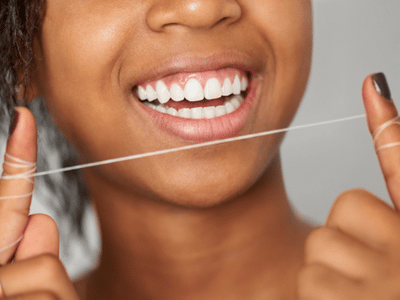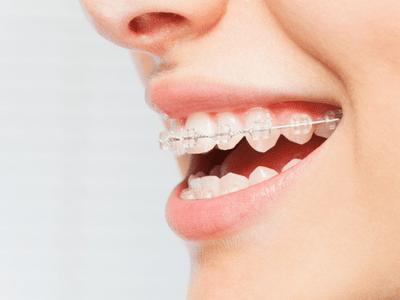
Nail Biting
Biting your nails is bad for your general and oral health because you’re introducing bacteria and dirt into your mouth. The germs and grime you ingest while biting your nails can cause illness and the consistent biting is hard on your enamel. While it certainly isn’t a good habit to keep up because of the dirt and germs residing under your nails, there are many more negative effects.
Chewing your nails results in unnecessary wear on your teeth. It weakens the enamel and can even lead to chipping or the teeth becoming crooked. When you have braces, chewing your nails slows down orthodontic treatment. In addition to weakening the roots and making the teeth susceptible to movement, biting your nails can also displace brackets and wires. This makes your braces less effective and can result in more appointments to fix appliances or brackets.
 Flossing can sometimes get forgotten or skipped in a nightly oral hygiene routine. But, flossing is actually essential to maintaining oral health, especially throughout orthodontic treatment. Before we get into how to become an expert braces flosser, here’s some more information about why flossing is so critical in the first place.
Flossing can sometimes get forgotten or skipped in a nightly oral hygiene routine. But, flossing is actually essential to maintaining oral health, especially throughout orthodontic treatment. Before we get into how to become an expert braces flosser, here’s some more information about why flossing is so critical in the first place.  Often the first step of orthodontic treatment is an expander. Expanders, or palatal expanders, are orthodontic appliances that increase the space between the halves of the upper jaw. While that sounds scary and painful, expanders are very common! Many young and growing orthodontic patients have expanders, and they can help make sure you don’t have to undergo surgery later!
Often the first step of orthodontic treatment is an expander. Expanders, or palatal expanders, are orthodontic appliances that increase the space between the halves of the upper jaw. While that sounds scary and painful, expanders are very common! Many young and growing orthodontic patients have expanders, and they can help make sure you don’t have to undergo surgery later! One of our most common questions from patients is “What can I eat with my braces?” or “What foods do I have to give up?” and we have a few simple guidelines to share. Getting braces is a big change, and on top of the wires, brackets, or Invisalign trays, there’s a whole new set of habits you must get used to. Luckily, we’re here to help and answer any questions you may have during treatment! If you keep these in mind, your smile and diet will be happy and healthy!
One of our most common questions from patients is “What can I eat with my braces?” or “What foods do I have to give up?” and we have a few simple guidelines to share. Getting braces is a big change, and on top of the wires, brackets, or Invisalign trays, there’s a whole new set of habits you must get used to. Luckily, we’re here to help and answer any questions you may have during treatment! If you keep these in mind, your smile and diet will be happy and healthy! Parents are usually well-versed in getting their child to the dentist early on. Establishing oral health routines for your toddlers is standard – but many parents have questions about getting their child set up with orthodontic treatment. What about their first visit to the orthodontist? When should they go? Is my child too young for the orthodontist? Is my child too young for braces? Luckily, all these questions have simple answers.
Parents are usually well-versed in getting their child to the dentist early on. Establishing oral health routines for your toddlers is standard – but many parents have questions about getting their child set up with orthodontic treatment. What about their first visit to the orthodontist? When should they go? Is my child too young for the orthodontist? Is my child too young for braces? Luckily, all these questions have simple answers.  What is gum disease?
What is gum disease?